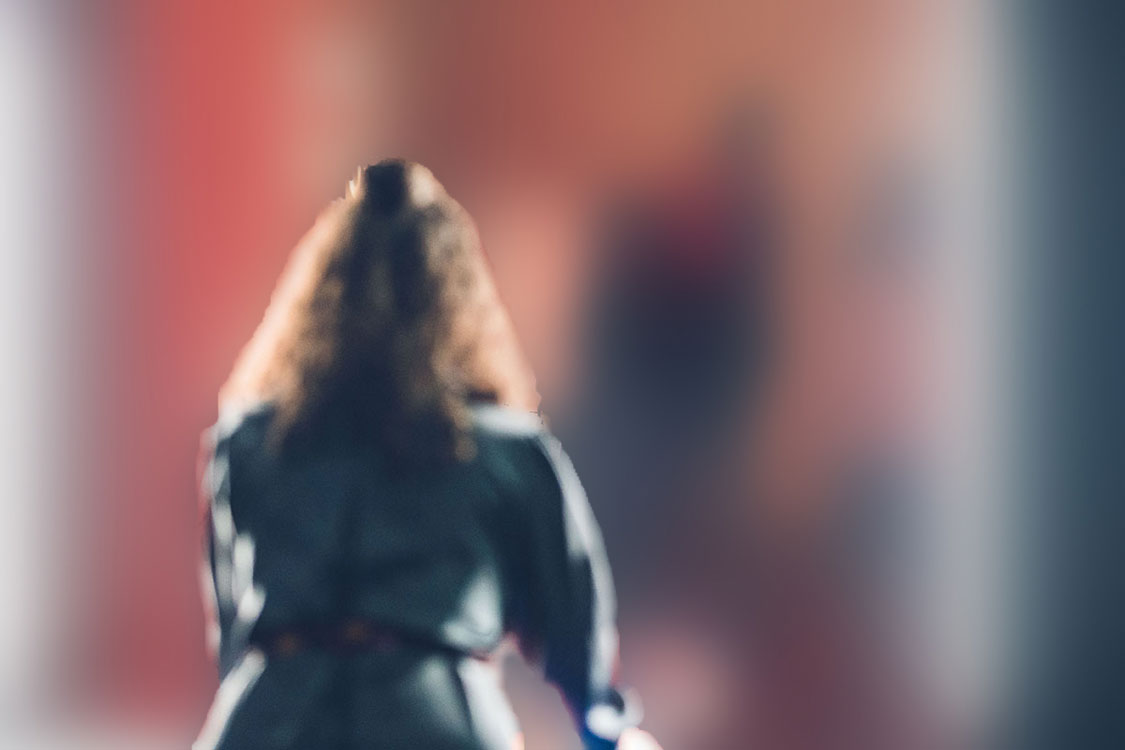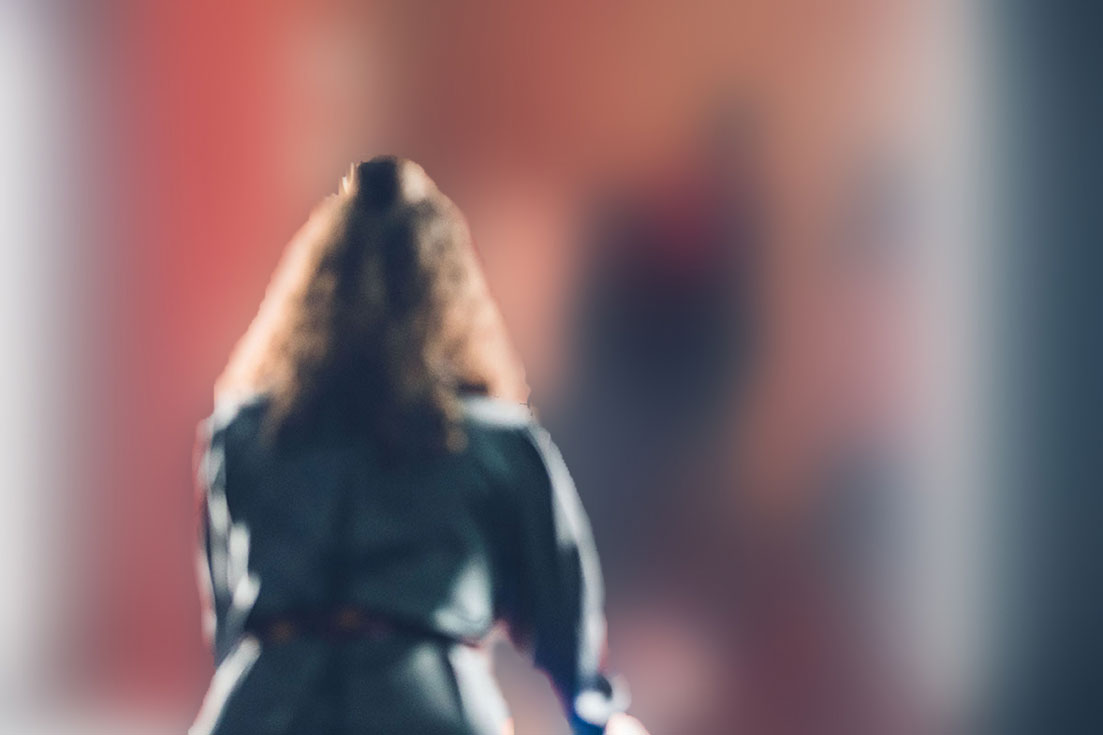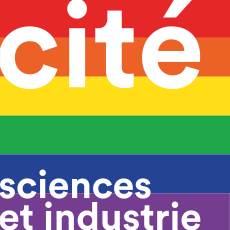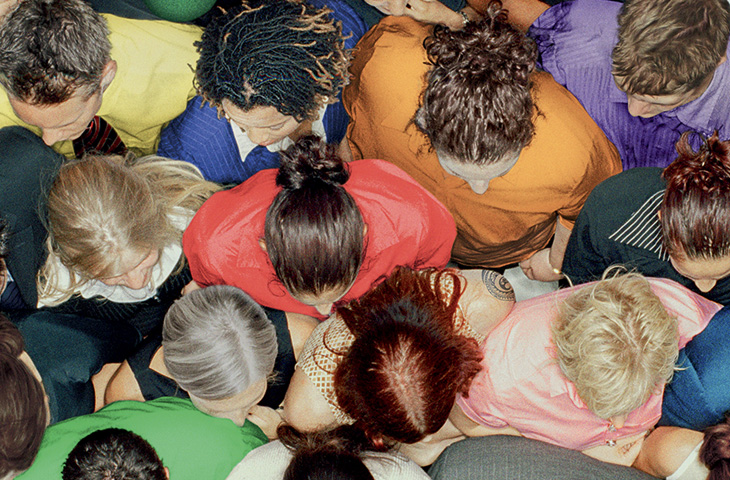A crowd is a number of interacting individuals. Surrounded by people, we are carried by enthusiasm or jostled around in every direction. While it may be pleasant being surrounded by football supporters at a match, demonstrating citizens who share the same convictions, or marathon runners all thirsty to win, it can also be a frightening experience to be crammed into the metro, squashed in a procession or in the middle of a religious pilgrimage.
All of these situations have a common factor: each individual exists only through their interaction with others. From these interaction emerge the collective phenomena that the Crowds exhibition aims to study through the lens of «Societyscience».
A modern vision of the crowd. In the popular imagination, crowds are frequently seen as something negative, like strange creatures that may even cause concern. Based on the most up-to-date interdisciplinary research, Crowds aims to deconstruct this longstanding negative image. Through an ingenious path design, the exhibition invites visitors to experience a more positive crowd immersion from within, or to better understand how crowds function by observing from the outside. Switching between player and observer, the visitor becomes a true “crowdologist”.
The public comes face to face with the exhibition’s underlying theme, density (number of people per m²) upon the first display. Visitors find themselves confronted with five 1m² cabins into which are packed 1, 3, 5, 7 and up to 9 characters printed in 3D. The sixth cabin is left empty so that visitors can enter, alone or in a group, to allow their senses to experience the concept of density.
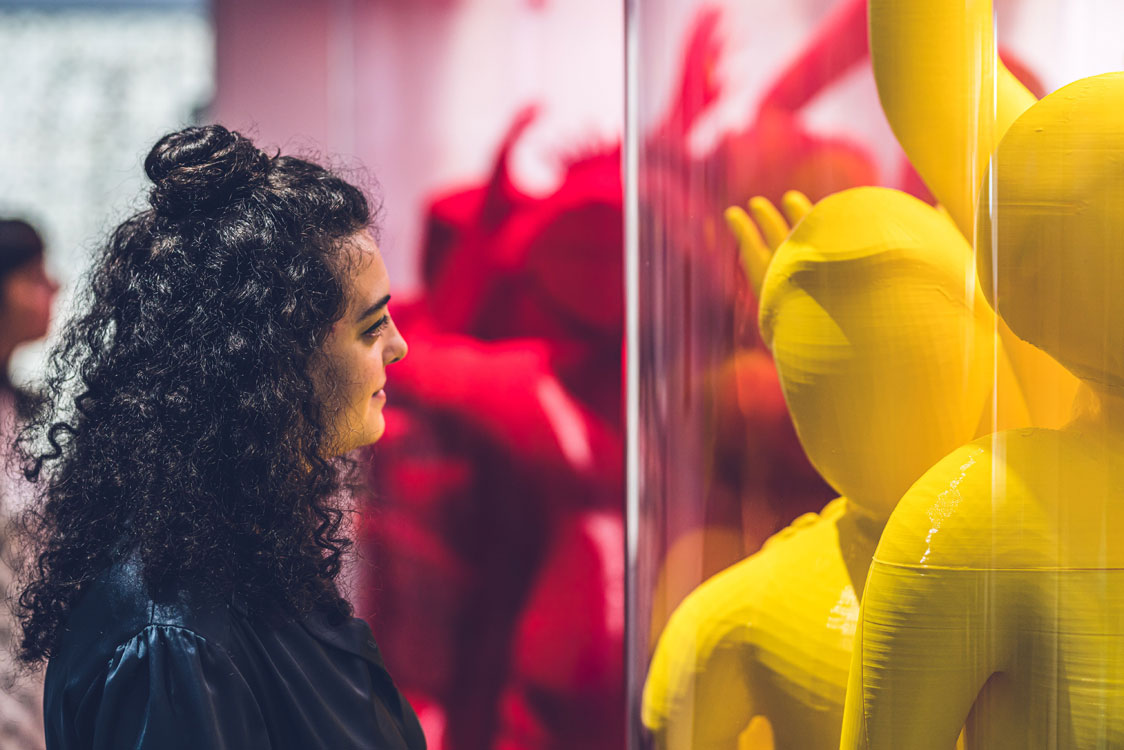
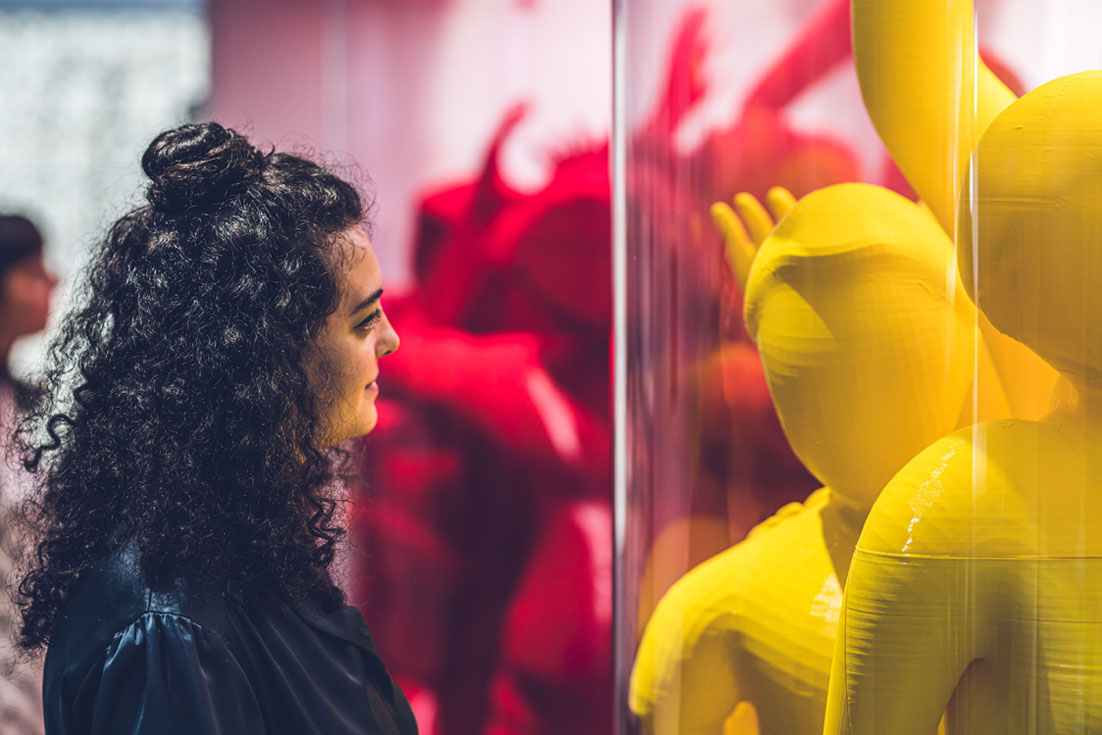

Individuals, in a very dense crowd, act like grains that by rushing can block others. By manipulating hourglasses the visitors find out a way of handling the situation and test in a simulation game the times of evacuation in a building and their consequences.
In this same room, a film by researcher Mehdi Moussaïd relates a study conducted in his laboratory: in an emergency situation, in most cases the entire crowd heads for the same emergency exit, hence the need for wide corridors and the clearest possible signage.
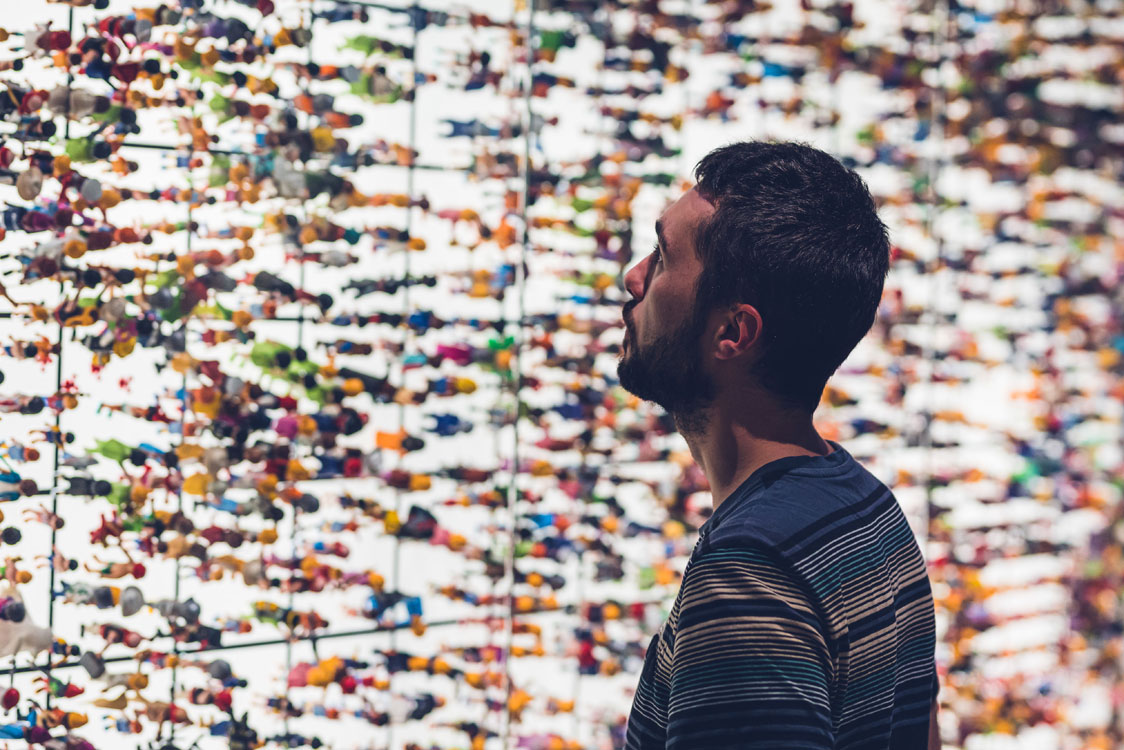
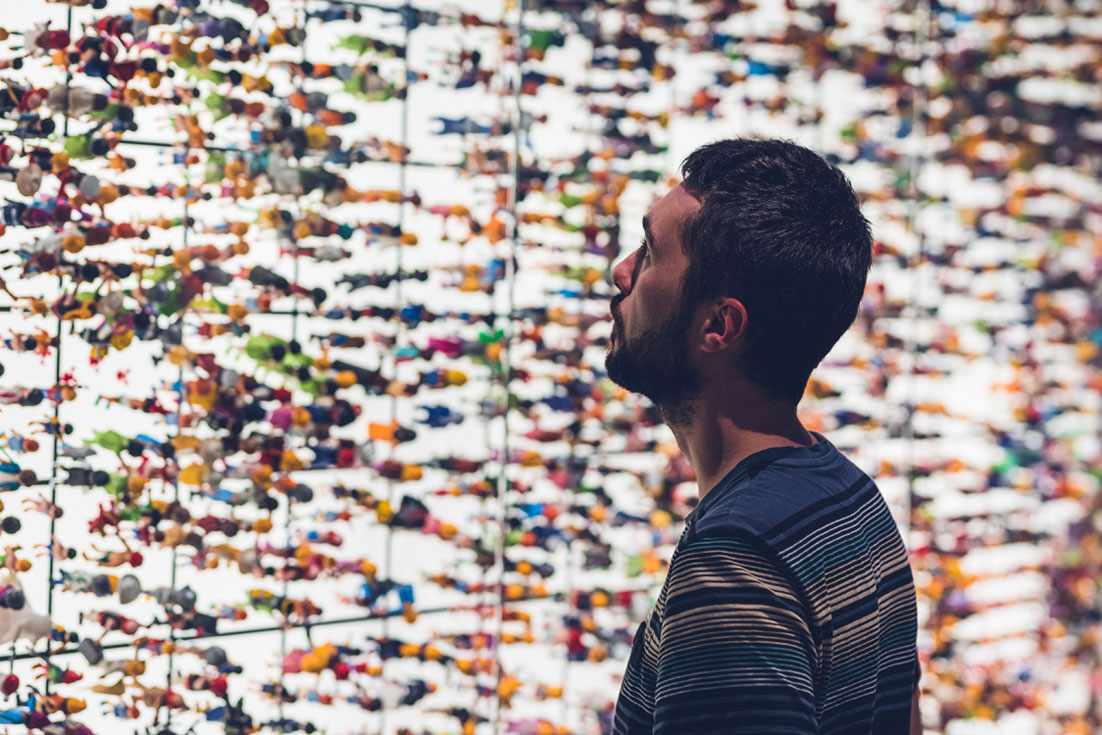

Collective behaviour can be seen among multiple species of wildlife. Which ones? This is one of the questions in a collective quiz entitled “Questions for sheep”.
Further along, a multimedia game invites visitors to train their eyes to spot characteristic pedestrian behaviour. In the same room, a unique film of moving footsteps is projected onto the floor, inviting visitors to join this peculiar dance floor to discover the hidden rules that govern how we approach - or move away from - one another.
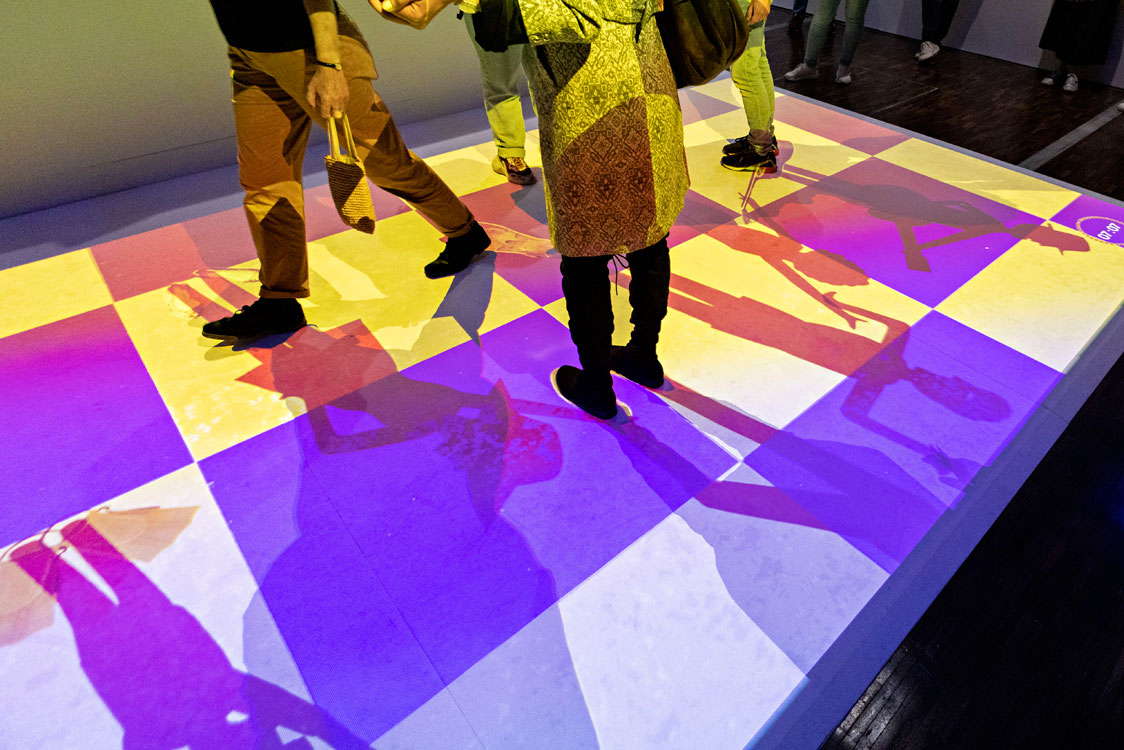
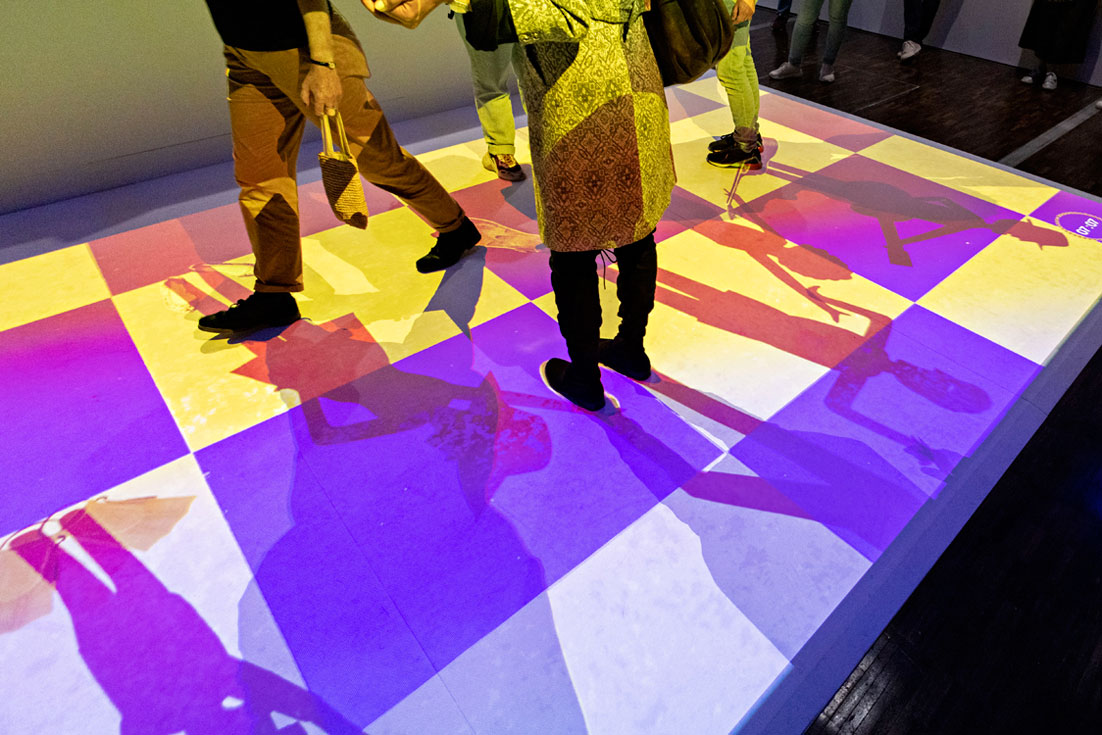

By projecting on the wall a data visualisation tool named “The politoscope”, researcher David Chavalarias demonstrates that interactions between Twitter users are based on affinities and can therefore heavily polarise a debate.
A little further on, a set of display cases features plastic installations offering a quirky illustration of hearsay in about a dozen examples of famous and lesser-known rumours.
And why is it that, when we sing together, it feels as if we’re vibrating in unison? A karaoke session analyses this scientific phenomenon and invites the public to sing out loud.
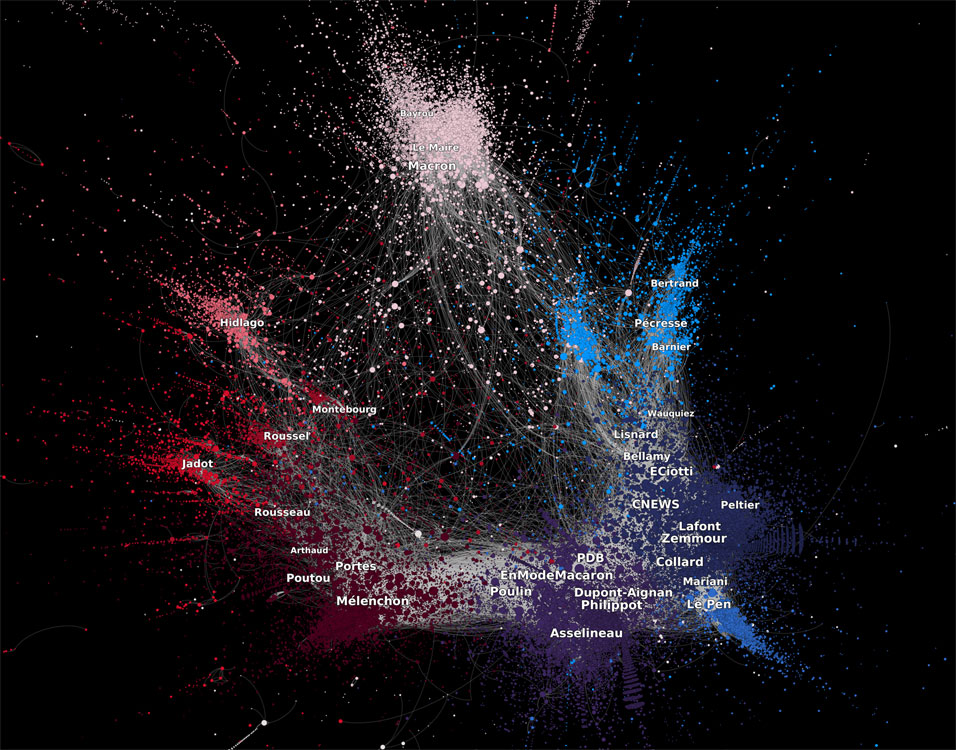
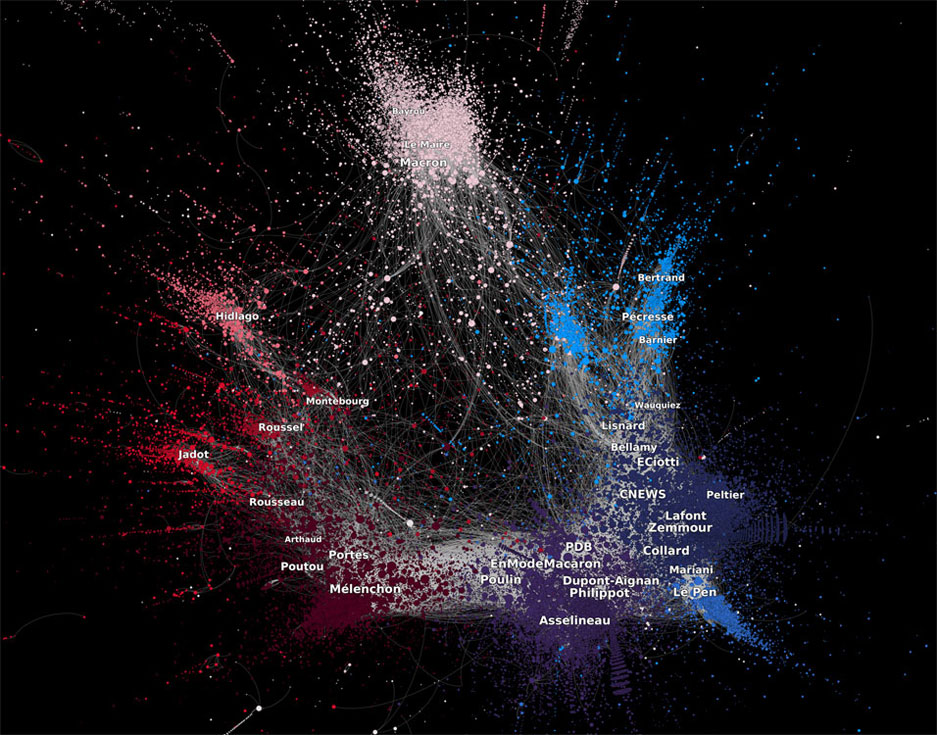

While it is true that collective movements can lead to the worst of scenarios, they can also generate a sense of solidarity and a form of collective intelligence. This is demonstrated in a film that offers a mixed approach: historical, sociological, political, psychological and anthropological. Fluctuating between jubilation and violence, mass crime and solidarity events, this final part of the exhibition aims to shatter misconceptions about crowds, historically perceived as dangerous and uncontrollable. It also offers an opportunity to study the notion of crowd panic.



Visitors can even spend a moment in the shoes of a “crowdologist”!
That is what this secret room is for, and it has a few surprises in store!
